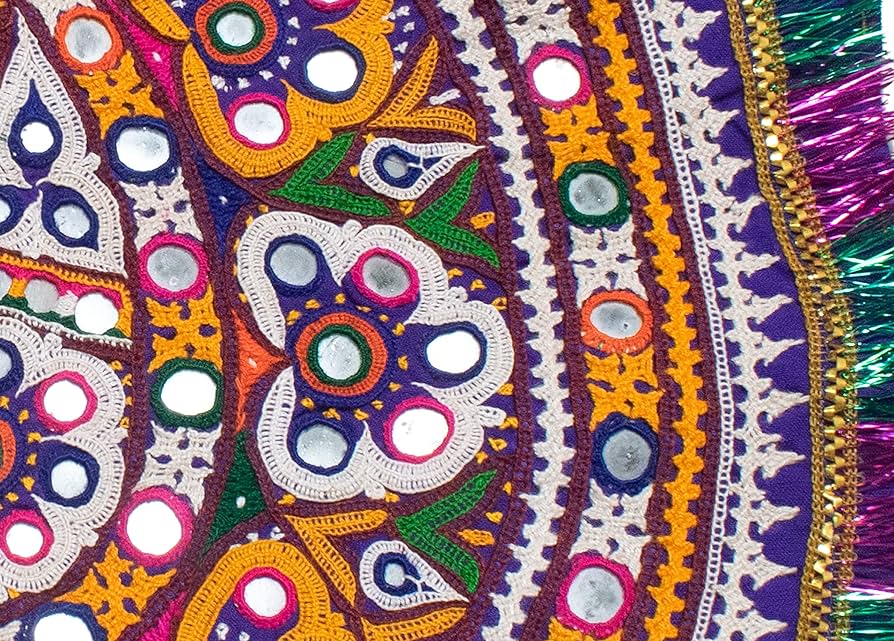Ahir is one of the many tribes of the Kutch region, which under the patronage of the royal family, found their distinctive style of embroidery. They are a pastoral community that settled in Kutch. Ahir, the name finds its origin in the Sanskrit word Abhira, which means fearless. They identify themselves as Gopas or herders who came with Lord Krishna to Dwarka and followed the Gop culture. The embroidery designs are regional, and very specific to their community, playing a significant role in marriage and cultural rituals. In many communities, a girl makes articles for her bridal goods throughout her childhood. Her ability as an embroiderer and her embroidered bridal goods are publicly displayed to demonstrate her skill and the textile wealth she is bringing to the marriage.
Ahir embroidery is one of the most easily identifiable embroidery styles from Kutch, Gujarat. Characterised by a rhythmic row of embroidered patterns, the use of bright colours, mirrors and intricate needlework that embellishes the entire fabric, there are plenty of stitches that are used to beautify the product. The women folks indulge themselves in this type of embroidery and create striking patterns. Many communities involve themselves in embroidery. Each community has their signature stitches that distinguish it from the rest.
The tools used to stitch include threads, cloth, needle, measuring tape, tracing sheet, tailor machine, scale, pencil, and colour mixture. The embellishment is made on fabric with colourful threads and other accessories such as mirrors and sometimes beads. The style is distinguished by its tiny mirrors, surrounded by minutely detailed medallions worked with geometric motifs. Using bright colours, the pattern is placed in a grid arrangement. Sankli or chain stitch for outlining and vana or herringbone stitch used for filling along with bakhiya and dana serving the purpose of filling and detailing the motifs and designs. This gamut of stitches comprises the Ahir embroidery. The inter weaning space is covered with the chain stitch and the buttonhole stitch. Usually, cotton and silk are the most preferred fabrics to carry out embroidery.
The fabric that is produced can be used as table cloths, curtains, bed covers, tapestries, handbags, sling bags, dolls, purses, Torana, home decor and also for personal utilities. The hand-stitched products have a more excellent value than the machinery ones as one likes to buy from the maker directly. It also adds to the economic model of the artisan family.



